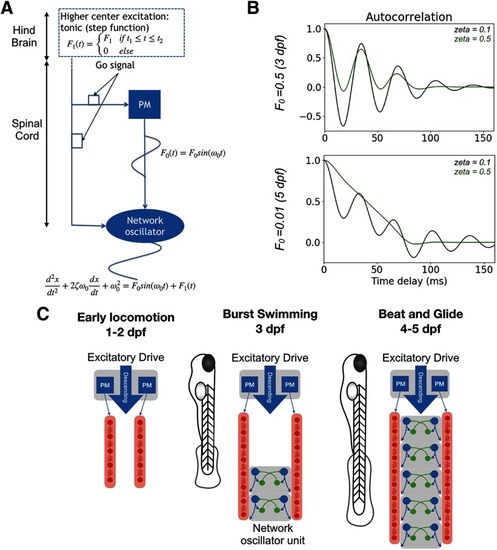Figure 8.
- ID
- ZDB-FIG-200225-21
- Publication
- Roussel et al., 2020 - Spatiotemporal transition in the role of synaptic inhibition to the tail beat rhythm of developing larval zebrafish
- Other Figures
- All Figure Page
- Back to All Figure Page
|
Coupled oscillator model of architectural change from a pacemaker to a network oscillator-based spinal locomotor circuits of developing zebrafish. |

